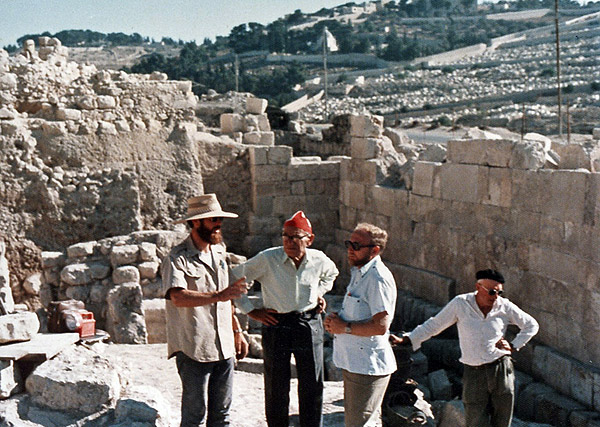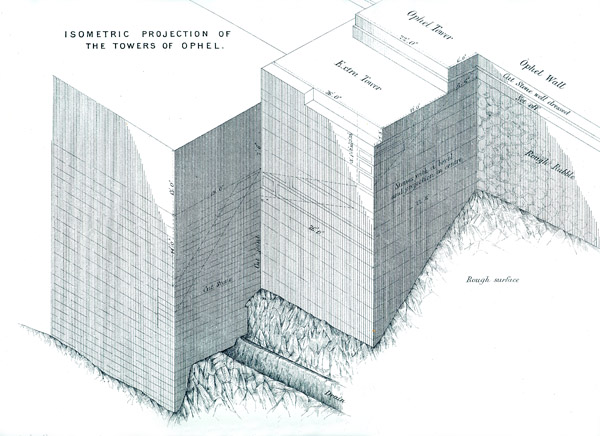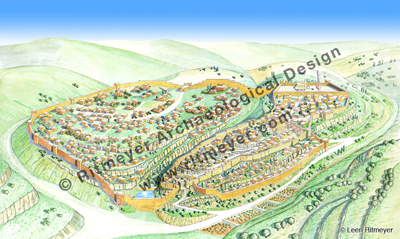The Hebrew University in Jerusalem announced today that in 2009, a bulla (clay impression of a seal) was found in the Ophel excavations bearing the name of King Hezekiah. The seal impression was found during the wet-sifting of earth layers from the Ophel excavation at the Temple Mount Sifting Project.

The Ophel excavations at the foot of the southern wall of the Temple Mount, conducted by the Hebrew University of Jerusalem’s Institute of Archaeology under the direction of Dr. Eilat Mazar, have unearthed an impression of the royal seal of King Hezekiah (727–698 BCE).Measuring 9.7 X 8.6 mm, the oval impression was imprinted on a 3 mm thick soft bulla (piece of inscribed clay) measuring 13 X 12 mm. Around the impression is the depression left by the frame of the ring in which the seal was set.The impression bears an inscription in ancient Hebrew script:“לחזקיהו [בן] אחז מלך יהדה”“Belonging to Hezekiah [son of] Ahaz king of Judah”and a two-winged sun, with wings turned downward, flanked by two ankh symbols symbolizing life.
The seal was found in debris outside the eastern part of the so-called Royal Structure and was discarded probably through one of the windows of the building. This area is familiar to me as I was initially put in charge of its excavation by the late Prof. Benjamin Mazar and excavated remains of an Herodian building. The Iron Age remains were found below this level.

The place where the seal was found is close to a large tower that was apparently added to the existing fortifications by King Hezekiah. Warren dubbed this tower the Extra Tower.

Kathleen Kenyon also excavated here in the 1960’s and uncovered the remains of this structure in her Area SII. This fortification of Jerusalem was part of Hezekiah’s expansion of the city.
Many other building works of Hezekiah have been uncovered in the Jerusalem excavations, such as the Broad Wall in the Jewish Quarter of the Old City of Jerusalem. This wall is referred to in Isa. 22.10 and was part of the new city walls that Hezekiah built around the previously unprotected Western Hill.

The article of the Hebrew University gives a fascinating insight into the significance of the change in King Hezekiah’s personal symbols:
The symbols on the seal impression from the Ophel suggest that they were made late in his life, when both the Royal administrative authority and the King’s personal symbols changed from the winged scarab (dung beetle)—the symbol of power and rule that had been familiar throughout the Ancient Near East, to that of the winged sun—a motif that proclaimed God’s protection, which gave the regime its legitimacy and power, also widespread throughout the Ancient Near East and used by the Assyrian Kings.
This change most likely reflected both the Assyrian influence and Hezekiah’s desire to emphasize his political sovereignty, and Hezekiah’s own profound awareness of the powerful patronage given his reign by the God of Israel. While the changed Royal administrative symbol imprinted on the King’s jars used the motif of a sun with wings extended to the sides, Hezekiah’s personal changed symbol had a sun with sheltering wings turned down and a life-symbol at the end of each wing. This special addition of the symbol of life may support the assumption that the change on the King’s personal seal was made after Hezekiah had recovered from the life-threatening illness of shehin (II Kings 20:1-8), when the life-symbol became especially significant for him (ca. 704 BCE).

Thanks Leen for these additional details. My question pertains to the photograph of yourself with Professor Benjamin Mazar. Who are the other two gentlemen please?
Daniel, on the other side of Mazar is Meir Ben-Dov, deputy director of the dig and the other person is one of the workers.
What a great find, and again from Eilat Mazar! Just wondering, is it really so that archaeology is so slow, that between founding and announcing it takes 6 years? The sifting takes time, I think.
Thank you for the news!!
While the discovery of King Hezekiah’s seal impression is exiting and important, it does nothing to change the dating of Warren’s “Extra Tower.” This tower was constructed of ashlars featuring partially drafted margins surrounding a prominent, unworked boss in the center and “of the character identified as Phoenician at Samaria.” These stones were laid as headers and stretchers. Eilat Mazar stated, “… the way in which the stones were laid actually demonstrated constructional flexibility – which only highly skilled builders would have possessed” (Discovering the Solomonic wall in Jerusalem, 2011). King Hezekiah’s Broad Wall displays characteristics of a whole different class of builders which demonstrates that the “Extra Tower” and “Broad Wall” were constructed at different times, by different people.
Arthur,
That argument doesn’t stack up. For example, Herod’s Temple Mount was built with beautiful marginally drafted stones. Most other buildings were built with regular squared stones. That doesn’t mean that these buildings were built in a different period.
The Broad Wall is a city wall and there was no need to use drafted masonry. Stones with bulging bosses have been found, however, at the corner of the Middle Gate, although they have no margins. It is entirely possible that the Extra Tower was built with left over stones of Hezekiah’s new Temple Mount, especially as they date to the same period.
Is it possible that Hezekiah changed the symbol to one using wings to honor God after ( as brought out in the scriptures) an angel came and killed off many Assyrian soldiers and was a victory for Hezekiah ?
Gildo, for a comprehensive answer, see: https://www.haaretz.com/jewish/archaeology/.premium-1.689594